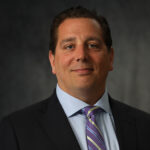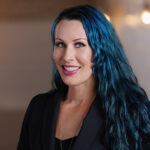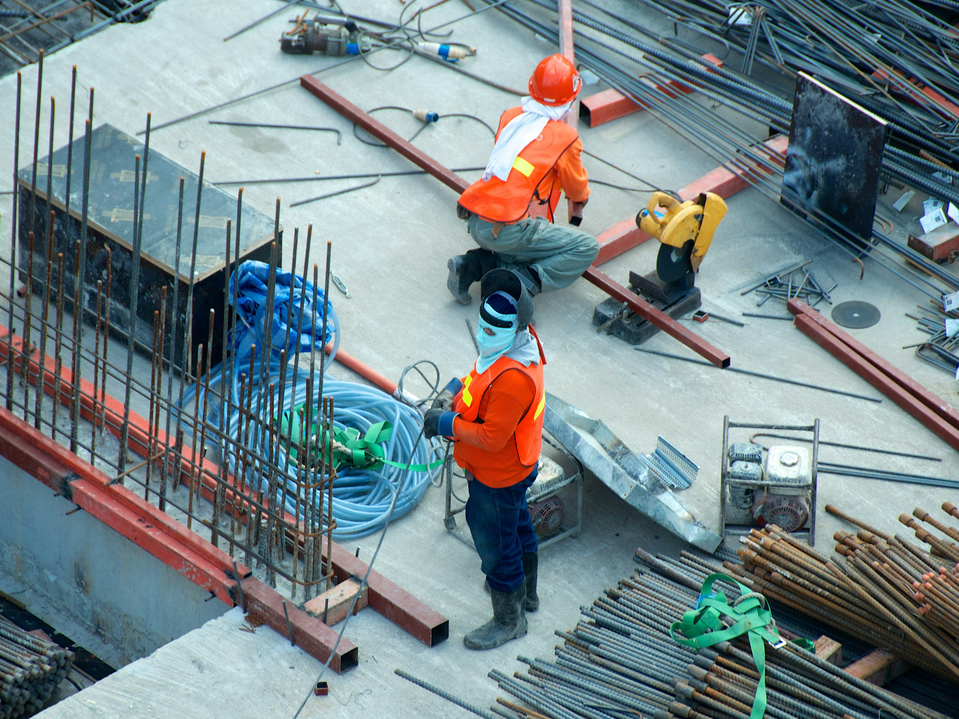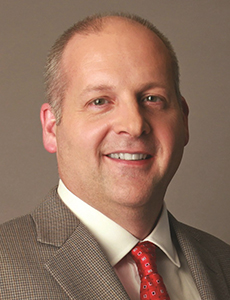Sponsored: Munich Re
How the Insurance Industry is Tackling Rising Natural Disaster Costs Through Science-Based Risk Mitigation
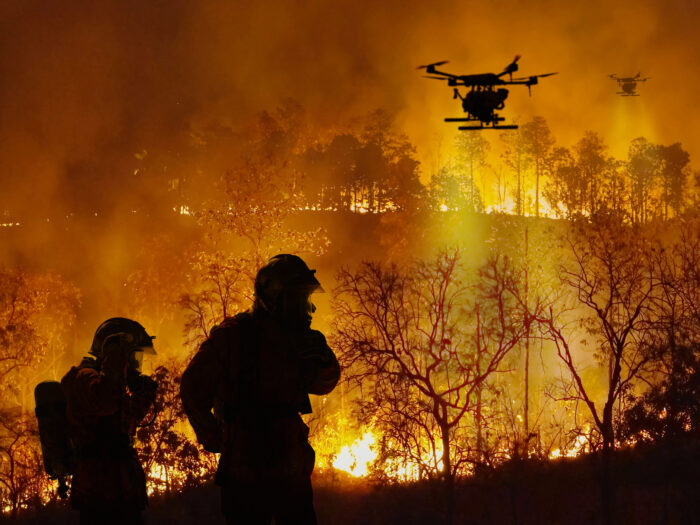
The insurance industry faces an unprecedented challenge as natural disasters become more frequent, severe, and costly. In 2024 alone, 27 events in the United States each exceeded $1 billion in damages, continuing a troubling trend that shows no signs of abating. Combined with post-COVID inflation that has significantly elevated property values, these mounting losses are forcing insurers to rethink their fundamental approach to risk management.
“When we look at the recent past, we’ve observed natural catastrophe events becoming more extreme, more regular, and more costly,” said Mike Quigley, Executive Vice President and Head of Property Underwriting & Multiline Risk Quantification at Munich Re US. “These events displace families and businesses and disrupt entire communities.”
The consequences extend far beyond individual claims. Rising losses have led to increased insurance costs, higher deductibles, and greater coinsurance requirements for homeowners and business owners across the country. In extreme cases like Florida and California, entire markets have been disrupted, with availability and affordability becoming critical concerns.
The Growing Scale of Natural Catastrophe Losses
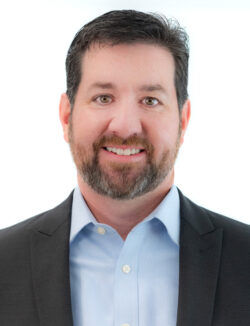
Mike Quigley, Executive Vice President and Head of Property Underwriting & Multiline Risk Quantification, Munich Re US
The escalating frequency and severity of natural disasters represents more than just a statistical trend—it’s fundamentally reshaping the insurance landscape. The combination of climate-driven changes and economic factors has created a perfect storm of rising costs that traditional approaches cannot address alone.
“Adding to this challenge, we’ve experienced a higher inflationary environment since COVID that has driven up property values significantly,” Quigley said. “Home and property values are quite a bit higher than they were just five years ago, which leads to more costly outcomes when these increasingly severe natural catastrophe events occur.”
This upward trajectory in losses has put tremendous pressure on price and availability across markets. Florida has implemented reforms on the personal lines side, while California’s market disruption was highlighted by the recent January fires, demonstrating the continuing stress on that market.
The industry’s response has often focused on traditional methods: raising premiums, increasing deductibles, and imposing more restrictions on insurance products. However, these approaches have limitations when it comes to maintaining relevance with policyholders and ensuring continued market stability.
“We can’t simply address this by increasing premiums and imposing more restrictions on insurance products,” Quigley said. “As an insurance market, its important to remain relevant to our policyholders. We need to focus not just on pricing current exposure, but on how we can bend that cost curve down.”
The Critical Role of Risk Engineering and Mitigation
The solution lies in addressing the root causes of increasing losses rather than simply pricing for higher risks. This shift in focus has elevated the importance of risk engineering and mitigation strategies that can demonstrably reduce the severity of losses when disasters strike.
Risk mitigation represents a collaborative effort that extends beyond the insurance industry itself. It requires coordination between insurers, builders, communities, regulators, and governments to implement solutions that can meaningfully impact loss outcomes.
“It’s imperative for the insurance industry, builders, communities, regulators, and governments all to focus on bringing down the cost curve through methods like mitigation,” Quigley said. “To me, this approach is critical going forward.”
The science behind effective mitigation has advanced significantly in recent years, providing concrete evidence of which building practices, materials, and codes can make the difference between a manageable loss and a catastrophic one. This scientific foundation is essential for gaining buy-in from all stakeholders and ensuring that mitigation efforts are based on proven effectiveness rather than assumptions.
Modern risk engineering takes a comprehensive approach, examining how building materials interact with various perils including winds, hail, wind-driven rain, and wildfire. It also considers how building practices and building codes influence outcomes, potentially steering an event from being completely disruptive to a community toward a more manageable impact.
The challenge lies in translating scientific findings into practical applications across the building and insurance industries. This requires not only identifying effective mitigation measures but also creating pathways for their adoption through code changes, industry standards, and consumer education.
Leading Through Science
At the forefront of this science-based approach to risk mitigation stands the Insurance Institute for Business & Home Safety (IBHS), a nonprofit organization that has become instrumental in advancing the industry’s understanding of how to reduce catastrophic losses through better building practices and materials.
Munich Re US has been deeply involved with IBHS since its inception, serving as a founding member of the IBHS Research Center in Richburg, SC. Quigley has served on the board of directors since mid-2018, while multiple Munich Re US colleagues participate in various committees, including the research advisory council that helps guide the institute’s research direction.
“It’s an organization that’s funded by insurance carriers and reinsurance carriers, and we were a founding member of the Research Center,” Quigley said. “It’s been a very important part of the mitigation story.”
IBHS operates as a scientific organization focused on understanding the fundamental drivers of catastrophic losses. Their research examines how building materials interact with natural perils, how building practices influence outcomes, and how these factors can either amplify or mitigate damage when disasters strike.
“They are a nonprofit focused on the science,” Quigley said. “They look at what’s driving the costs of losses up through understanding how building materials interact with wind, hail, wind-driven rain, or wildfire, then how building practices and building codes influence outcomes.”
The organization’s methodology combines field research with laboratory testing. Following major disaster events, IBHS scientists conduct detailed examinations of damaged properties to understand failure modes and damage patterns. This real-world data is then brought back to their full-scale laboratory, where they can recreate the conditions that led to specific types of damage.
“They conduct scientific tests to replicate those conditions,” Quigley said. “We’re thankful and lucky to have a full-scale lab like IBHS that can run category three hurricane winds and wind-driven rain, and recreate fires and ember transport across buildings to really learn how these losses are propagating and how we’re getting increased damages.”
This scientific approach has yielded practical mitigation practices that are already being implemented across the industry. One of the most significant examples is the sealed roof deck requirement that has been incorporated into the Florida building code, which is now recognized as one of the strongest in the nation.
“The most impactful example of science in action we have seen is the sealed roof deck,” Quigley said. “Now in the Florida code, it is something we would like to see across the country, because we’re talking about rain that can happen anywhere, especially if it’s combined with wind.”
The impact of this single code change demonstrates the potential for science-based mitigation. A sealed roof deck with a water barrier underneath shingles can prevent water damage that could otherwise amplify losses by 30% or more. By eliminating this damage amplifier through a relatively simple code change and proper enforcement, communities can significantly reduce their overall risk profile.
Beyond hurricane-related improvements, IBHS has developed comprehensive approaches to wildfire mitigation through their Wildfire Prepared Home standards. These guidelines address multiple aspects of wildfire risk, from roofing materials to connected structures like fences and decks, as well as defensible space requirements around properties.
“Wildfire Prepared Home is a set of mitigation actions and building approaches that IBHS has developed for homes and businesses in wildfire-prone areas or the wildland-urban interface,” Quigley said. “It’s really a series of actions involving the type of roof, connected structures like fences and decks, ember- and flame-resistant vents, and ensuring the first five feet around the home is clear of debris.”
These standards have influenced regulatory actions in California, where insurance carriers must now consider these components when providing rates or discounts. This creates a clear incentive structure for property owners to implement wildfire mitigation measures.
The institute’s work extends to testing and rating building materials themselves. Their evaluation of impact-resistant shingles has changed manufacturer behavior, with some companies pulling products and reformulating others to meet the more rigorous testing standards that IBHS has developed.
“They have been testing these shingles both in the lab and at their roof aging farm, observing how they hold up to weather in natural conditions as they age before testing them by pounding them with hail,” Quigley said. “They’ve been publishing these ratings on their website, and it’s changed the behavior of some shingle manufacturers.”
The real-world impact of these efforts is becoming visible in communities that have embraced science-based building standards. Alabama has emerged as a leader in implementing FORTIFIED building standards with over 53,000 designated homes, and some builders now exclusively constructing to these enhanced requirements.
“Alabama is probably the poster child for the builder community really rallying around those improved building approaches and improved materials, actually putting those into practice when they build communities,” Quigley said.
The wildfire preparedness work has also produced tangible results, with nationwide builder KB Homes constructing the first Wildfire Prepared Neighborhood near Escondido, California. This development incorporates not just individual property protections, but community-level planning that includes firebreaks and appropriate spacing between lots to reduce the risk of fire spread.
Munich Re US leverages its relationship with IBHS to enhance its own risk assessment capabilities and to educate clients about emerging best practices. The company’s representatives regularly interact with IBHS scientists, bringing insights back to Munich Re’s internal geoscientists and incorporating these findings into their risk modeling and client discussions.
“At Munich Re US, we have representatives that are plugged into IBHS and meet regularly with their scientists,” Quigley said. “We take that information and bring it back to our own internal geoscientists. We factor that into our view of risk and into our modeling. We then bring that view out to our clients.”
This knowledge transfer extends beyond technical discussions to include practical education for primary insurers. Munich Re US hosts events that bring clients to the IBHS Research Center, broadening the impact of the institute’s work beyond its direct membership.
“Sometimes that involves taking clients to IBHS, to the Research Center, and hosting events,” Quigley said. “We introduce them to these engineers. Some of those clients are members, others are not, so it’s broadening the impact beyond just those who are members.”
The collaborative approach extends to post-loss investigations, where Munich Re US representatives join IBHS teams and other experts to examine damage patterns and extract lessons that can inform future mitigation efforts.
“We’ve attended post-loss visits to sites from wildfires to hurricanes alongside the IBHS team members and CAL FIRE, and we’ve learned from that firsthand,” Quigley said. “We’ve brought those experiences to our clients so it’s not just an esoteric scientific paper. It’s pictures from actual homes and businesses that were damaged, what we learned out of that, and how we connect the science to that.”
Looking ahead, the industry faces the challenge of accelerating the adoption of proven mitigation strategies while continuing to advance the science behind risk reduction. The multi-year cycles for code changes present one obstacle, however the foundation of scientific evidence and real-world success stories provides a strong basis for continued progress.
“Unfortunately, the code cycles are multi-year processes,” Quigley said. “That is part of the challenge – it takes time for those codes to change and for those impacts to be seen across the industry. But that is not a reason to avoid putting forward that effort. It is a bit of a long game, but it is one that IBHS and their member companies have been focusing on since day one.”
The ultimate goal is to create a comprehensive approach that goes beyond traditional risk transfer to address the fundamental drivers of increasing catastrophic losses. This requires continued collaboration between insurers, reinsurers, researchers, builders, regulators, and property owners to implement solutions that can meaningfully reduce the human and economic costs of natural disasters.
“Based on the number of interactions we’ve had in the last couple years, I can say with certainty that carriers are focused on this issue,” Quigley said. “They understand that they need to go beyond just the traditional pricing and product design. They have to think about what is really driving these losses and how we can change the environment.”
Learn more about what Munich Re US is doing to close the climate protection gap at https://www.munichre.com/us-non-life/en/solutions/reinsurance/public-private-partnerships.html.
![]()
This article was produced by the R&I Brand Studio, a unit of the advertising department of Risk & Insurance, in collaboration with Munich Re US. The editorial staff of Risk & Insurance had no role in its preparation.

